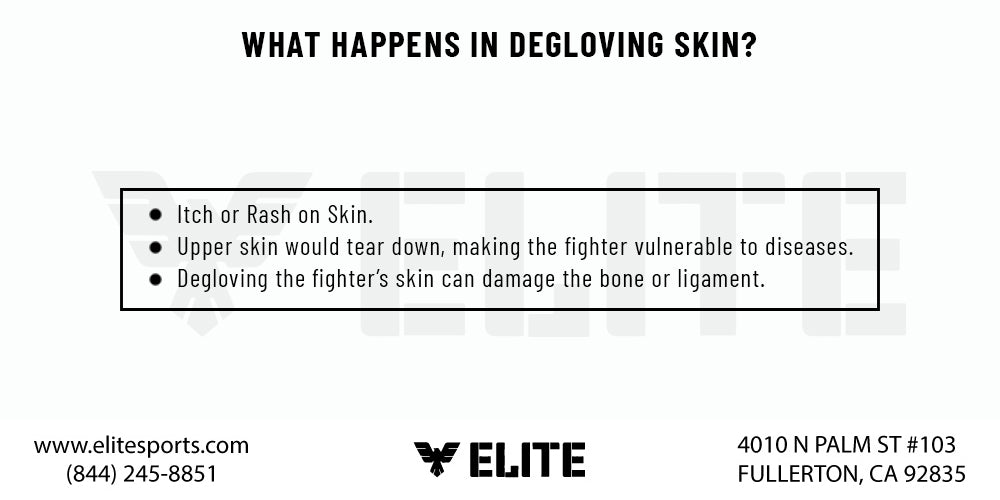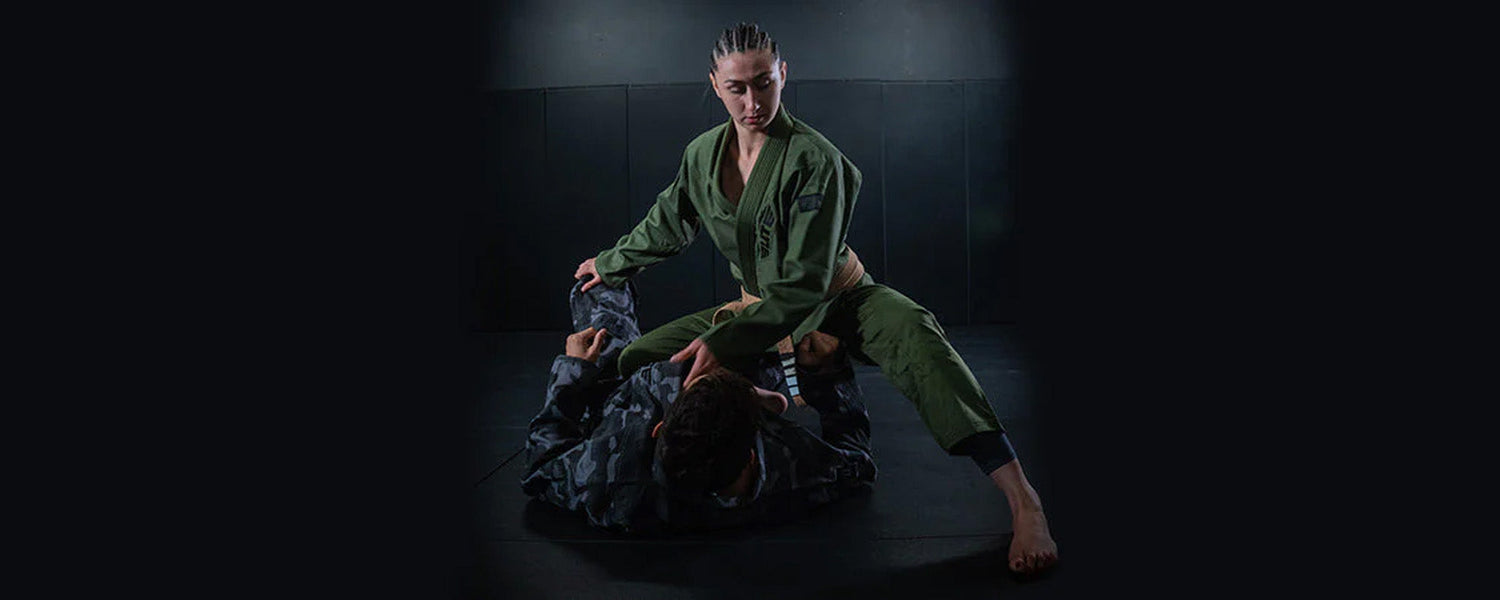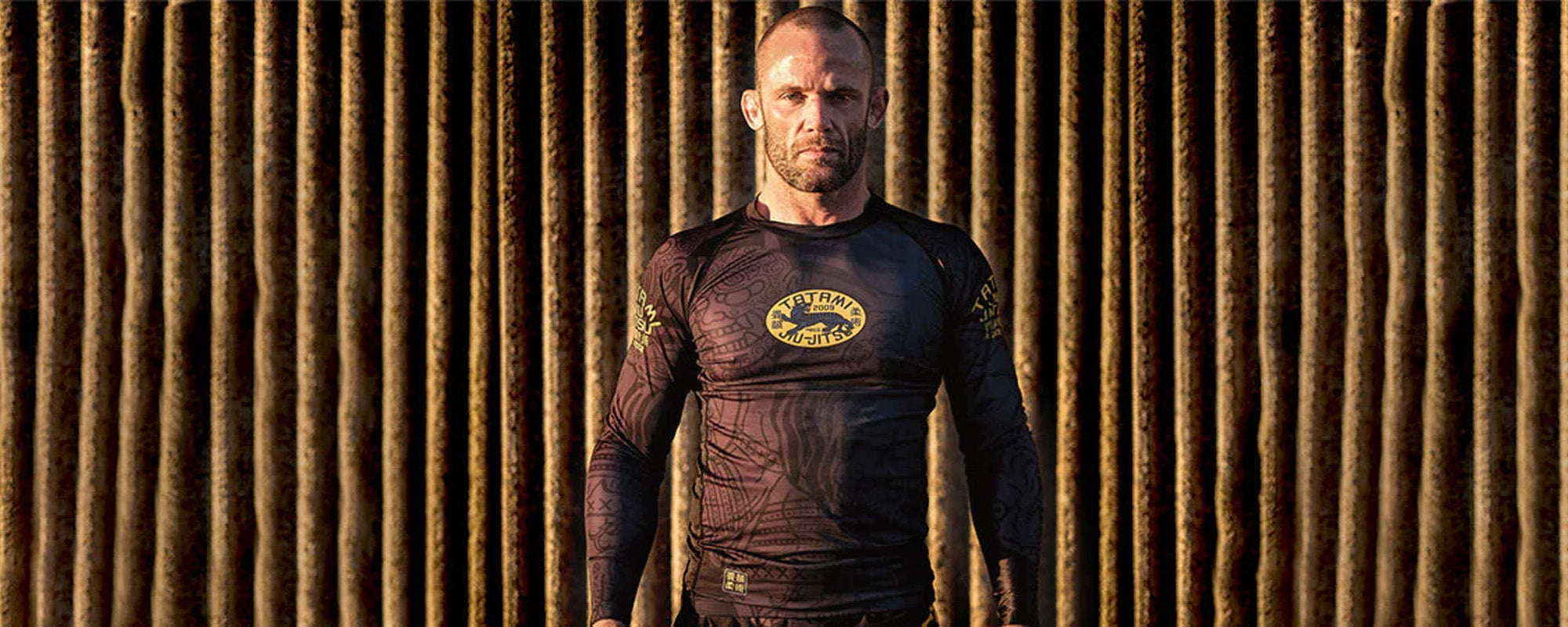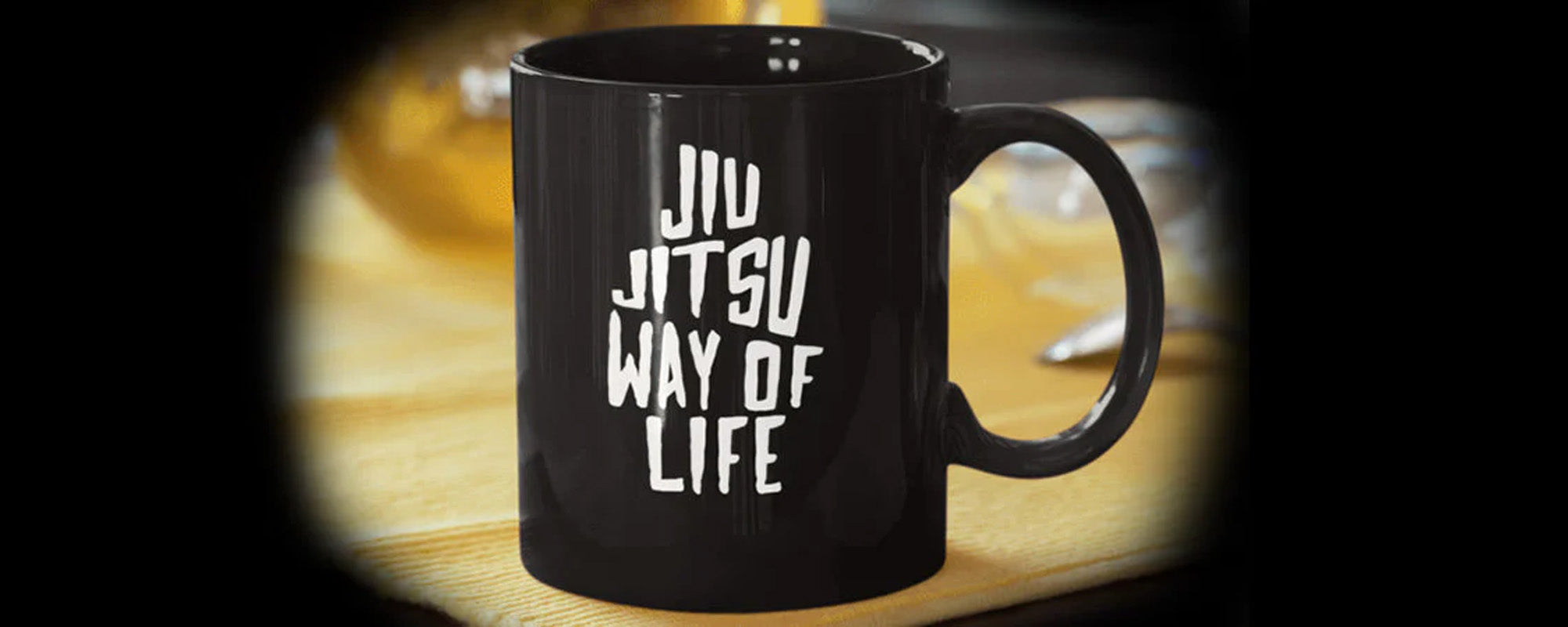BJJ is considered a safe sport as compared to other martial arts because the safety of BJJ practitioners has always remained the top priority. Different rules are made to ensure the safety of BJJ practitioners. It is forbidden to wear jewelry and pocketed BJJ Gi pants or shorts. Considering the grappling nature of the sport, these rules are enforced to ensure the safety of BJJ practitioners.
Most pockets in Gi pants have zips in them. They are dangerous as they can induce cuts in the fighter's skin and cause bleeding. To avoid any kind of mishap, it is advisable to not wear any kind of jewelry during BJJ training or sparring sessions.
Table of content
1. BJJ and Accessories
BJJ is a submission grappling combat sport. The BJJ athlete is in physical contact with his opponent throughout the match. Even in BJJ training sessions, practitioners roll with each other maintaining constant physical contact.
As BJJ fighters have constant physical contact, they must take care of their cleanliness and hygiene. As BJJ practitioners also follow fashion trends, they might like to wear jewelry and different stuff. Well, there are two schools of thought on this. One school of thought is the view that jewelry and BJJ do not go well together because of the grappling nature of BJJ.
While the other school of thought says that it is not such a problem to wear accessories during BJJ training sessions. Whatever practitioners might think in the majority of BJJ gyms and institutes, it is not appreciated to wear any kind of accessory.
2. Should You Wear Jewelry While Training For BJJ
No doubt BJJ practitioners like to wear earrings, bracelets, rings, and necklaces just like others. But during training, these beautiful and elegant accessories can cause injuries and bruises. Also, there is a chance of harm to other BJJ athletes with those accessories.
During BJJ chokes, practitioners strangle each other's heads to force submissions. An earring will definitely increase the chances of injury as it can pierce the skin, causing the practitioner to bleed.
During a scissor sweep, the fighter has to restrain his opponent by the collar grip. When the practitioner is wearing rings or any other accessory, it can cause damage to the fighter’s finger leading to cuts.
The wedding ring is an important and meaningful piece of jewelry for married practitioners and some might not like to remove it. But even that can become a hazard for BJJ fighters. It can lead to the breakage of finger bones.
“Whatever the part of jewelry is, it must not be worn during rolling or sparring sessions for the sake of the practitioner's own health”.
2.1. Body Piercings and BJJ
As BJJ is a contact sport, piercings are also a bad idea just like other kinds of jewelry.
For example, if a practitioner has piercings on him/her,
- Eyebrows Piercing
- Septum Piercing
- Belly Piercing
- Ear Piercing
- Lip Piercing
- Surface Piercing
There is a chance that it can get stuck in his or his opponent’s Gi, which can hurt the practitioner a lot. It is better to remove them and then indulge in BJJ training so that the practitioners stay safe from any injury.
3. Should You Wear Gi Pants/Shorts With Pockets While Training For BJJ
Pocketed Gi pants/shorts are not allowed to wear during BJJ training. Practitioners are asked to remove any kind of clothing that has pockets in it as fighters' hands and feet can get stuck and can cause harm. Belt loops and baggy clothing are also not allowed during BJJ training sessions.
Appropriate fitted attire is worn in BJJ gyms that ensure seamless fluid motion for the BJJ athletes. Beginners do not wear Gi in their very first class, so they are asked to wear tight rash guards.
4. Dangers of Wearing Jewelry and Pocketed Gear While Training BJJ
Following are some reasons why wearing jewelry and use of pocketed attire is not allowed during BJJ.
4.1. Irritation
Often, the practitioner suffers from skin irritation because of wearing jewelry. It can be because of the metal from which the jewelry is made. Also during training and sparring sessions, jewelry such as earrings and necklaces can get caught in practitioners' Gi and induce skin irritation.
In an Arm Triangle choke, the opponent’s arm is in direct contact with the fighter’s ear. If the opponent applied any pressure on the fighter’s ear, it can rupture the ear lobe.
Skin Irritation can further lead to swelling or scaliness. It can even stop the fighter from training in BJJ as it can spread to other fighters upon skin contact. It drastically affects the game of a BJJ practitioner.
4.2. Tearing/Trauma
Tearing often happens with piercings. When piercings are accidentally pulled out during a fight, they can rupture a fighter's skin, and then it will take days to recover from that injury. Accidentally pulling out of piercings often requires stitches.
The fighter has to stay off mats all this time. Without any exercise and having complete rest weakens the muscles of the fighter. To prevent any such situation, fighters must not wear any accessories during BJJ training.
4.3. Breaking of any Bone or Ligament
Many fighters wear Gi pants and shorts with pockets. It might look good but there is always an increased chance of getting injured. Limbs can be strangled in the pockets of the attire. During BJJ training fighters often roll with each other. While applying techniques, their hands and feet can get stuck in those pockets causing them to fall off and lose their balance.
Mostly, fingers getting caught in the pockets can lead to the breaking of the fighter's phalanges. It affects the grip strength of the fighter and also his BJJ performance. There is also a threat that with broken fingers/phalanges, fighters can not continue their BJJ career.
4.4. Risk of Allergy
As the jewelry is composed of different alloyed metals, it can become the cause of skin allergy. BJJ fighters sweat a lot. The sweat can get in contact with the worn jewelry. It can oxidize that piece of jewelry and as it touches on the fighter’s skin, it can cause irritation that can lead to allergy.
For example, if your opponent grabs you by the Guillotine choke, there is a possibility that your necklace will rub hard against your neck. The metal of the necklace causes severe irritation in the skin.
An allergy can be pretty bad as it always has a chance of spreading. It can turn into a rash causing itching and burning.
Delayed medical assistance can cause the spread of an allergy. The fighter may also have to stay off the mat during that period.
So it is better to stay away from the possibility that can hinder the fighter’s game and career.
4.5. Green Stains on Your Skin
Wearing jewelry can induce a green tinge on your skin. It normally happens when the alloyed metal oxidizes. The copper present in the jewelry not only turns your skin green but also makes your skin susceptible to allergies.
Upon contact with sweat and water, copper in jewelry oxidizes and leaves green or black stains on the fighter’s skin. These stains often wear off easily but if that type of jewelry is worn, the stains can turn into something malignant.
4.6. Degloving
Degloving is a traumatic injury that happens when the foremost layer of skin or tissue gets torn away from the underlying bone, muscle, or connective tissue. It happens because of worn necklaces, bracelets, and wristbands. The sudden pull of a necklace or bracelet can damage the BJJ practitioner's skin, making them highly vulnerable to degloving.
Degloving injury can cause serious issues and in some cases, the fighter’s skin would appear as partially hanging to the wound. It is a painful injury as it tears the fighter’s skin pretty badly. Sometimes, even the fingers or toes of the fighter get degloved when they get stuck in pockets. The treatment for degloved skin or fingers/toes is their reattachment.
It is a gut-wrenching injury that keeps the fighter off the mats for a long time.

5. Jewelry That Can be Worn in BJJ Training
When it comes to jewelry, arguably only “small tongue piercings'' can be allowed during BJJ training, which is also not recommended. It is because they are inside the fighter’s tongue, which is inside the mouth during training and rolling sessions. And the fighters also keep mouthguards so their tongue and teeth can grill the pierced area of the tongue.
As it is inside the mouth and does not pose an imminent danger so they are allowed.
6. Jewelry and Pocketed Gi pants in BJJ Competitions
In BJJ competitions, wearing any kind of jewelry and pocketed gear is strictly prohibited. Safety is at the top of the list in BJJ competitions. Even if practitioners can be allowed to wear some pieces of jewelry in gyms, this possibility is absolutely nullified in BJJ tournaments and competitions.
7. IBJJF’s Code of Conduct
IBJJF has a code of conduct for playing BJJ as well as Gi rules.
- The practitioner’s uniform must be clean, dry, and free of rips and tears.
- Practitioners must abstain from training if they are feeling sick.
- Any kind of jewelry is strictly prohibited.
- The fabric of Gi must be cotton-like only.
- Gi of the fighters must not be loose and baggy.
- The fighter’s belt must not have loops.
- Broad shorts colored black or white without pockets or with pockets stitched completely shut, without buttons or zippers must be worn.
- Compression shorts of elastic material are allowed.
- Painted Gi’s are not allowed.
- Patch on Gi is only allowed where patches are permitted.
- The belt must be durable and 4 to 5 cm wide, colored according to the practitioner’s rank.
- Hitting, pulling, or punched is forbidden.
- Practitioners must not use any inappropriate language during the match or while they are on the mat.
- If a practitioner violates any code of conduct, he will be escorted outside of the premises and will not be allowed to participate in upcoming BJJ competitions.
8. FAQs
8.1. What Should be Worn During BJJ Training?
During BJJ training, the practitioners must wear tight rash guards and pants with no pockets at all and no jewelry of any type. Gi must not be loose and baggy. The belt should not have loops. Tight gear ensures the fighter's safety from different injuries.
8.2. How are Hygiene and Jewelry connected?
Wearing jewelry can leave green and black stains on the practitioner’s skin. It is a sign of bad hygiene as dirt and germs are present on the practitioner's skin. So jewelry must not be worn at all to stay clean and healthy during BJJ training.
9. Conclusion
Wearing Jewelry and pocketed Gi pants or shorts is not secure for a BJJ fighter. Tarnished jewelry results in skin infections. And pocketed Gi pants lead to injuries such as breaking of any bone or ligament or even degloving of fingers and feet.













Leave a comment
This site is protected by hCaptcha and the hCaptcha Privacy Policy and Terms of Service apply.